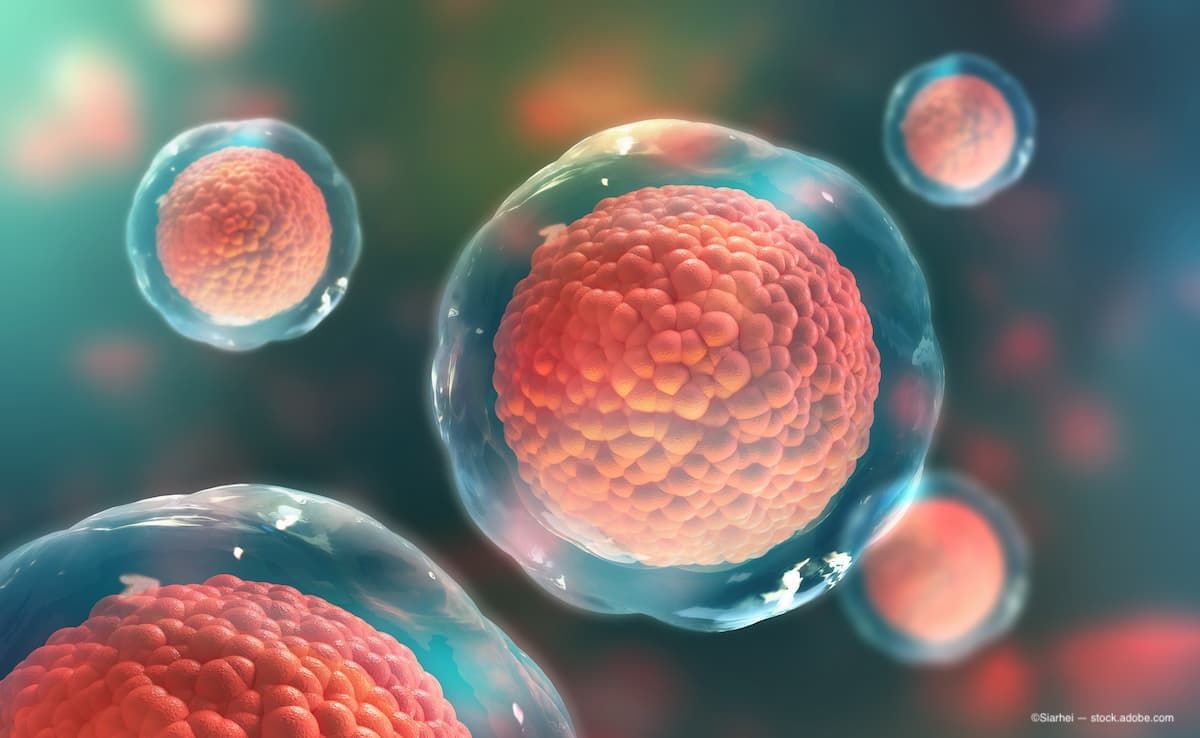- COVID-19
- Biosimilars
- Cataract Therapeutics
- DME
- Gene Therapy
- Workplace
- Ptosis
- Optic Relief
- Imaging
- Geographic Atrophy
- AMD
- Presbyopia
- Ocular Surface Disease
- Practice Management
- Pediatrics
- Surgery
- Therapeutics
- Optometry
- Retina
- Cataract
- Pharmacy
- IOL
- Dry Eye
- Understanding Antibiotic Resistance
- Refractive
- Cornea
- Glaucoma
- OCT
- Ocular Allergy
- Clinical Diagnosis
- Technology
Mass Eye and Ear researchers create possible glaucoma treatment strategy to direct stem cells to retina
In the study, researchers changed the microenvironment in the eye in a way that enabled them to take stem cells from blood and turn them into retinal ganglion cells that were capable of migrating and surviving into the eye’s retina.
(Image Credit: AdobeStock/Siarhei)

Glaucoma is one of the leading causes of blindness globally, and the loss of vision due to the loss of retinal ganglion cells (RGCs) currently cannot be reversed with any treatment.
Several studies have looked at replacing RGCs through cell transplants, but this process is still in the research and development stage and fraught with limitations that highlight a need for a more precise manner of effectively repopulating these cells in the retina.1 Now, a multidisciplinary team led by researchers at the Schepens Eye Research Institute of Mass Eye and Ear has identified a new strategy for glaucoma cell replacement therapy.
In the study,1 researchers changed the microenvironment in the eye in a way that enabled them to take stem cells from blood and turn them into retinal ganglion cells that were capable of migrating and surviving into the eye’s retina. The researchers conducted their study on the adult mouse retina, but the work’s implications could one day be applied to human retina, according to the study.
According to a Mass Eye and Ear news release, a current limitation that impedes the success of current stem cell transplantation strategies in retina studies is that the majority of donor cells remain at the site of injection and do not migrate where they are most needed.2 To identify an improved solution, the researchers created RGCs out of stem cells, then tested the ability of various signaling molecules known as chemokines to guide these new neurons to their correct positions within the retina.
The researchers used a “big data” approach and examined hundreds of such molecules and receptors to find 12 unique to RGCs. They found stromal-derived factor 1 was the best-performing molecule for both migration and transplantation.
“This method of using chemokines to guide donor cell movement and integration represents a promising approach to restoring vision in glaucoma patients,” senior author Petr Baranov, MD, PhD, of Mass Eye and Ear, who is also an assistant professor of Ophthalmology at Harvard Medical School, said in the news release.“It was an exciting journey to work with a team of talented scientists with unique expertise to develop novel techniques in this study to modify the local environment to guide cell behavior – techniques that potentially be applied to treat other neurodegenerative conditions.”
According to the Mass Eye and Ear news release, the co-led by members of Baranov’s lab at Mass Eye and Ear including bioengineer and lead study author Jonathan R Soucy, PhD, and lead bioinformatician Emil Kriukov, MD. Co-authors also included Levi Todd, Monichan Phay, Volha V. Malechka, John Dayron Rivera and Thomas A Reh.
The study received funding from several National Eye Institute (NEI) of the National Institutes of Health (NIH) grants, with a complete list available in the paper, as well as grants from the Bright Focus Foundation and Gilbert Family Foundation.1
Further, the University of Washington disclosed a patent incorporating the endogenous reprogramming technology described in this report with inventors LT and TAR.2
